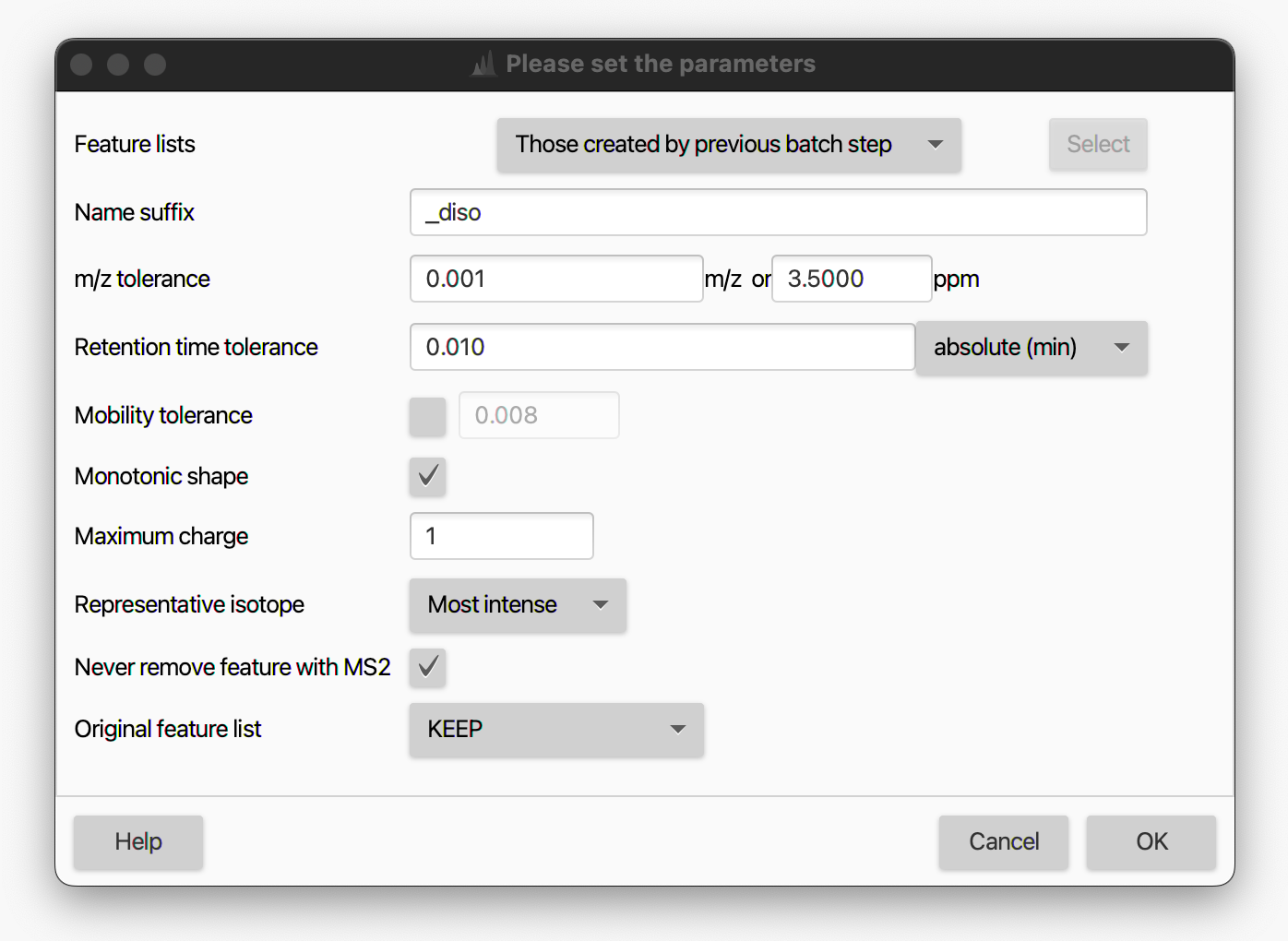13C isotope filter¶
Description¶
Feature list methods → Isotopes → 13C isotope filter (formerly: isotope grouper)
MZmine carries out the feature detection steps of chromatogram building and subsequent resolving considering all the signals stored in the mass lists. As a consequence, signals generated by isotopologues of the same chemical entity (see isotopic pattern) are detected as distinct features and included in the feature lists, representing redundant information for the downstream data analysis. This issue ordinarily occurs for C-containing molecules, where the 13C isotope signals can be easily detected (13C/12C ≈ 1.1%).
The 13C isotope filter module (formerly called Isotope grouper) aims at filtering out the features corresponding to the 13C isotopes of the same analyte. The algorithm consider each feature individually and checks for the presence of potential 13C-related peak(s) in the feature lists. When an isotope pattern meeting the user-defined tolerances (e.g. m/z, RT) and requirements (e.g. monotonic shape) is found, the information is saved, and only the feature corresponding to the e.g. most intense isotope is retained in the feature list. It must be noted that 13C peaks are searched within the feature list, and not in the raw data.
Parameters¶

Name suffix¶
String added as suffix when creating the new feature list(s).
m/z tolerance¶
Maximum allowed difference between the measured and the predicted m/z of the (potential) 13C isotope to be grouped as isotopologues. The tolerance can be specified as absolute tolerance (in m/z), relative tolerance (in ppm), or both. When both are specified, the tolerance range is calculated using the maximum between the absolute and relative tolerances.
We recommend to set a failry strict m/z tolerance to reduce the risk of discarding false 13C isotopes.
Retention time tolerance¶
Maximum allowed RT difference between the feature and its (potential) 13C isotope to be grouped as isotopologues.
Isotopologues should exhibit identical chromatographic behaviour and thus produce overlapping LC peak shapes. Therefore, a strict RT tolerance can be used to reduce the risk of discarding false 13C isotopes.
Mobility tolerance¶
If enabled and the mobility dimension was recorded, potential 13C isotopes will be grouped as isotopologues only if their mobility difference is within the defined tolerance.
The same principle seen for the RT tolerance apply to the IM dimension. Isotopologues should exhibit identical IM separation; therefore, a strict mobility tolerance can be used to reduce the risk of discarding false 13C isotopes.
Monotonic shape¶
If true, a monotonically decreasing trend of the isotope pattern (typical of the 13C isotope pattern of small molecules) is required for the filtering.
Maximum charge¶
Maximum charge state considered to predict the 13C isotopes' m/z. If a value > 1 is set, all the cahrge states are evaluated and the one providing the most isotope features detected is used for the filtering.
Never remove feature with MS2¶
If checked, potential 13C-related features will not be discarded if associated to a MS2 spectrum.
Original feature lists¶
Keep or remove the input feature list(s). The PROCESS IN PLACE option directly filter the input feature list and performs better in terms of memory usage; therefore, it is recommended over REMOVE, when available.